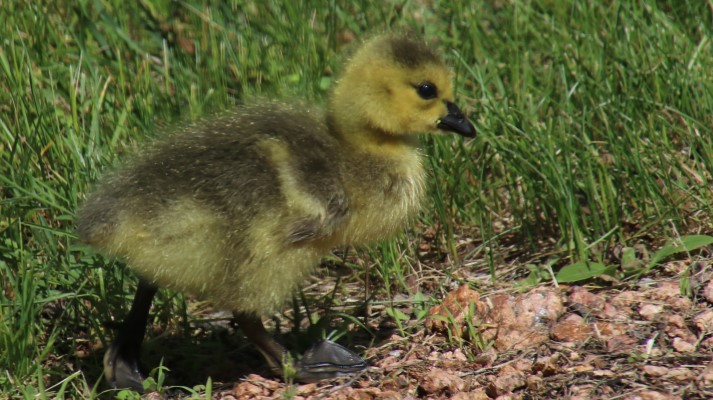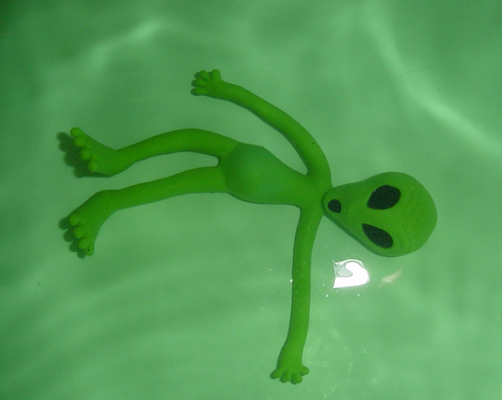
Research Summary 1
Sawyer, K. (2011). The Cognitive Neuroscience of Creativity: A Critical Review. Creativity Research Journal, 23(2), 137–154. https://doi.org/10.1080/10400419.2011.571191
This article attempts a comprehensive review of the then-current research (2011) on the cognitive neuroscience of creativity. The paper first summarizes the methods of neuroscience research which use the EEG, PET Scans and fMRI scans as the instruments to obtain data. It explains statistical averaging, paired image subtraction and Cognitive conjunction as ways that researchers increase the integrity of the findings. The paper goes on to present the findings of research divided into five categories, and then performs a critical review of those findings as applied to creativity research. The findings indicate that cognitive neuroscience shows promise as a methodology for researching creativity and the author presents areas of future study.
Top Tips/AHA Moments:
5 Key Findings of Cognitive Neuroscience Research on Creativity
- The entire brain is active when people are engaged in creative tasks, and the areas of the brain that are active, are the same as those that are active during many everyday tasks.
- Creativity is not localized in a particular hemisphere of the brain as popular culture sometimes suggests.
- Researchers studied brain activity as it relates to a subject experiencing an ‘aha’ moment – the experiments provide some evidence for a distinct pattern of neuronal activation immediately prior to an insight of a solution
- Most of the studies reviewed confirmed the existence of an ‘incubation effect’ – this effect is one of the oldest observations in the psychology of creativity. Namely, that a creative idea is often preceded by a period of unconscious incubation.
- For cognitive neuroscience studies, the standard definition of creativity as “the generation of something novel and useful,” is not used. It is necessary to decompose the concept of creativity into specific constructs onto which experiments can be applied.

Research Summary 2
Hammershøj, L. (2014). Creativity in education as a question of cultivating sensuous forces. Thinking Skills and Creativity, 13, 168-182.
In this article, the author describes how there is general consensus on the definition of the “creative product” – which is something that is “. . . both novel and relevant in the sense of being useful, appropriate, valuable, or interesting.” However, there is no consensus, and in fact, very little accounting for the creative process. The author applies the German Neo-humanistic personality building concept of Bildung to creativity process. During the development of this idea, Hammershoj presents the creative process as being formed by the sensuous forces of transcendence, judgment and imagination. He explores the creative process through four stages and an educational journey.
Top Tips/AHA Moments:
4 Key Takeaways from Considering Creativity Cultivating Sensuous Forces
- There is consensus on Creative Product, but very little consensus on what can be thought of as the Creative Process.
- The personality formation concept of Bildung is a helpful model to understand Creative Process better.
- This theory examines the interplay between the sensuous forces of transcendence (Schmidt), judgment (Kant), imagination (Kant) and vitality (Freud).
- The theory integrates a classic notion of four stages of the creative process: preparation, incubation, illumination and verification.

Research Summaries of Group Colleagues’ Work
Summary of Kate’s Research Presentation
Price-Mitchell, M. (2015, August 14). Cultivating creativity in a standards-based classroom. Edutopia. https://www.edutopia.org/blog/cultivating-creativity-standards-based-classrooms-marilyn-price-mitchell
This resource provides suggestions on how to boost creativity in the classroom, detailing different ways to think about creativity that goes beyond a typical description of it. The main idea explores what creativity is, and helps kids consider thought processes and attitudes of mind that go into “being creative.” It outlines 6 ways to help kids develop their creativity in the classroom and techniques for the teacher to add them in the classroom. Kate’s aha moment here was a reminder that everyone has the capacity to express creativity.
Webb, S. & Hagley, T. Jr. (2015, December). Cultivating creative schools: an arts-centric approach in Vancouver, Wash., sparks a ‘different kind of mind. https://link.gale.com/apps/doc/A437608031/AONE?u=stevens&sid=AONE&xid=e886aa12
This resource describes how educators are being put through a narrow ‘focus of learning’ – to prepare for major tests. This pushes aside the arts and creativity in the school environment. The main idea is the examination of one school and how they identified this problem and what they did about it. It is a case studied in how they changed their approach to learning by adding more art-centric learning and by embedding student choice in the curriculum. The resource includes 4 student stories and concludes that it is possible to create future ready students with art-centric learning.
Summary of Kyle’s Research Presentation
Berger, W. (2014). A more beautiful question : The power of inquiry to spark breakthrough ideas (First U.S. ed.). New York: Bloomsbury.
This work describes that there are powerful educational benefits for kids when they are able to ask their own questions rather than answer questions posed to them. While the age group that it may apply to best is college learners, the lesson is that through the process of creative inquiry and discovering the “best” questions, we can find otherwise un-found value for the learner.
Seechaliao, T. (2017). Instructional strategies to support creativity and innovation in education. Journal of education and learning. https://doi.org/10.5539/jel.v6n4p201
This resource describes how instructional strategies which support creation and creative approaches focus on a systematic development and share common processes. Kyle describes this resources as a meta-analysis of instructional strategies.

Top Tips
Dave’s Top Tips
- The entire brain is active when people are engaged in creative tasks, and the areas of the brain that are active, are the same as those that are active during many everyday tasks.
- Creativity is not localized in a particular hemisphere of the brain as popular culture sometimes suggests.
- Researchers studied brain activity as it relates to a subject experiencing an ‘aha’ moment – the experiments provide some evidence for a distinct pattern of neuronal activation immediately prior to an insight of a solution
- Most of the studies reviewed confirmed the existence of an ‘incubation effect’ – this effect is one of the oldest observations in the psychology of creativity. Namely, that a creative idea is often preceded by a period of unconscious incubation.
- For cognitive neuroscience studies, the standard definition of creativity as “the generation of something novel and useful,” is not used. It is necessary to decompose the concept of creativity into specific constructs onto which experiments can be applied.
- There is consensus on Creative Product, but very little consensus on what can be thought of as the Creative Process.
- The personality formation concept of Bildung is a helpful model to understand Creative Process better.
- One approach is to recognize there is an interplay between the sensuous forces of transcendence (Schmidt), judgment (Kant), imagination (Kant) and vitality (Freud) in the creative process.
- As the creative process progresses, be mindful of the classic notion of four stages of the creative process: preparation, incubation, illumination and verification.
Kate’s Top Tips
- 6 Ways to Boost Creativity
- Experiment with possibility thinking
- Provide opportunities to explore individual interests
- Develop 5 core attitudes related to creativity (self-discipline, risk taking, openness, tolerance, trust)
- Engage students in collaborative learning
- Practice divergent thinking
- Help students make connections through metaphorical thinking
- When it comes to cultivating creativity, students need to have an open mind and an idea to get them started. They must be interested in what they are working on and given the chance to explore in the right now, however with the future in mind by developing life skills that will help in future job settings.
- Teaching students that it is okay to fail, but reflect upon and learn from the process.
- There are powerful educational benefits to students asking questions and seeking inquiry.
- Students can benefit and become future ready through an arts-centric approach to learning.
- Remember that everyone can be creative.
- Ask powerful questions, do not expect a correct answer.
- Give opportunities for play and exploration within a students’ interests.
- Students, especially young students need opportunities to play in order to develop creative thinking skills. Allow for open ended play such as: legos, blocks, dolls/dress up, creation/coding type games, etc.
Kyle’s Top Tips
- It is possible to make future ready students from an arts centric curriculum.
- Everyone Has creative capacities
- Ask better questions
- Continue to reflect even after the result.
- Help Students manage anxiety
- Brainstorm together
- Give Examples
- Celebrate creativity and imagination
- Allow students to wonder
- Creat an environment where students can be vulnerable
- Have conversations about the stigma of being creative
- Use student interest for opportunities for creativity
- Ask open-ended questions
- Teach students it is ok to fail
- Include student choice when developing lessons
- Recognize the role peer pressure has in stifling creativity
- Offer clear and direct feedback when students are creative
- Implement Peter Elbow’s idea of freewriting in the classroom

Reflections

Additional Resources
Dave’s Additional Resources
Tan, L., Lee, S., Ponnusamy, L., Koh, E., & Tan, K. (2016). Fostering Creativity in the Classroom for High Ability Students: Context Does Matter. Education Sciences, 6(4), 36. https://doi.org/10.3390/educsci6040036
Robinson, K. (2019, December 18). Sir Ken Robinson: Finding Your Element. YouTube. https://youtu.be/17fbxRQgMlU
Tsai, K. C. (2012). The Value of Teaching Creativity in Adult Education. International Journal of Higher Education, 1(2), 84–91. https://eric.ed.gov/?id=EJ1057221
Avci, Ümmühan, Yalcinalp, Serpil. (2019). Creativity and Emerging Digital Educational Technologies: A Systematic Review. Turkish Online Journal of Educational Technology – TOJET, 18(3), 25–45. https://eric.ed.gov/?id=EJ1223768
Kyles Additional Resources
Kolk, Melinda. “7 ways to cultivate creativity in your classroom: develop a learning culture that nurtures creativity”. Creativity. Creative Educator. https://creativeeducator.tech4learning.com/2018/articles/cultivate-creativity-in-your-classroom.
Melinda offers 7 ideas for developing a creative environment for classroom learning. Believe everyone can and should be creative. Celebrate difference. Wonder and imagine. Try something new. Value questions more than answers. Get students making and playing. Expect creativity and celebrate student effort.
Kelleher, Ian; Whitman, Glenn (2016). “Neuroteach: brain science and the future of education”. Lanham, MD. Rowman & Littlefield.
Neuroteach is a comprehensive book highlighting the brain, technology, and educational environments (physical and intellectual). Neuroteach makes informed suggestions on which powerful strategies work best for every student while teaching us about the in’s and out’s of the learning process from a neurological perspective.
Formica, Michael (2015). “Mindfulness and cultivating creativity: accessing the mind’s default mode”. Mindfulness. Psychology Today. https://www.psychologytoday.com/us/blog/enlightened-living/201503/mindfulness-and-cultivating-creativity
Michael explains to us the “default mode network” and its relation to creativity. He tells us that distractions interrupt our entry into the default mode network and hinders our creativity and that mindfulness can help get us in the right headspace for creativity to emerge.

